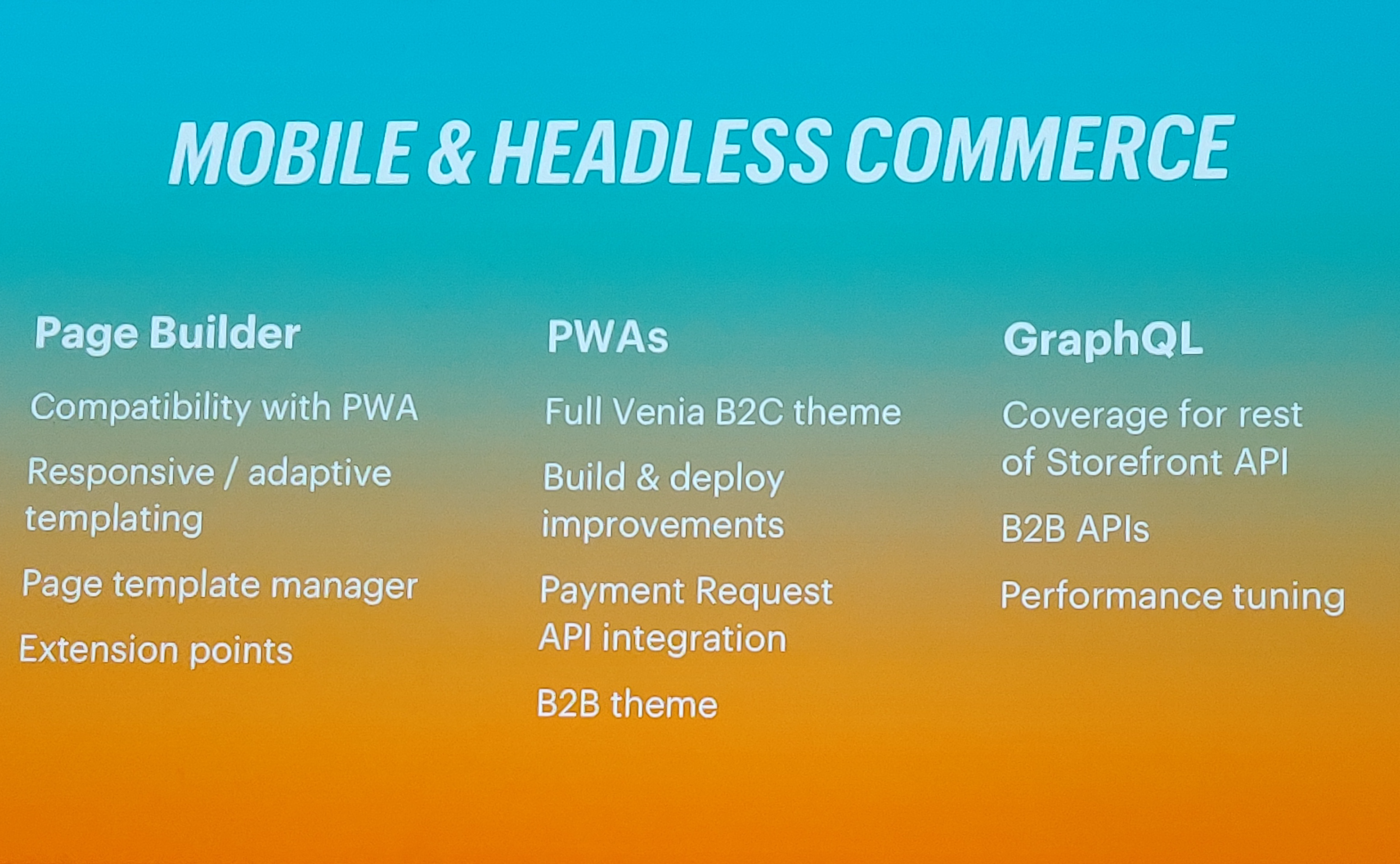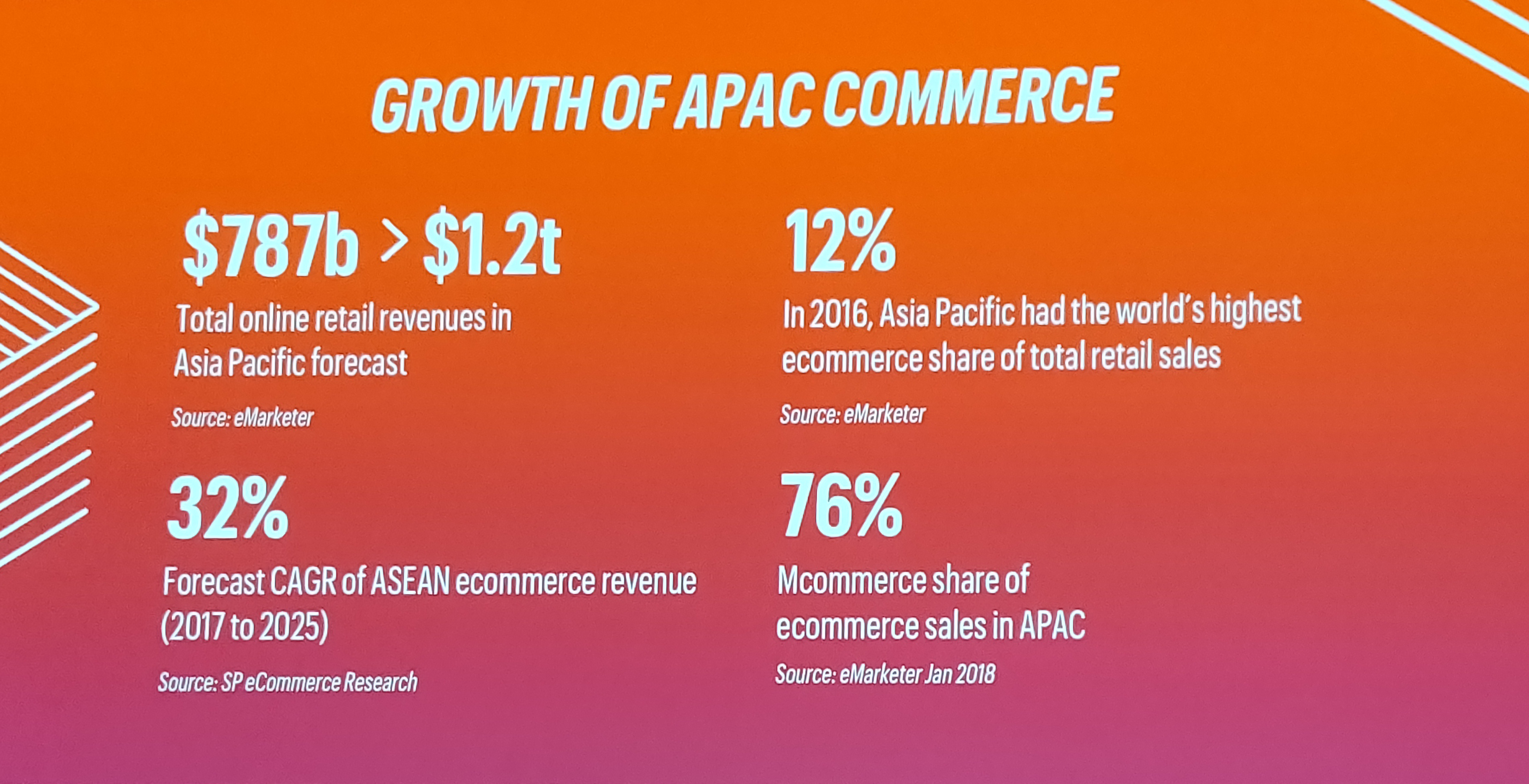The 5 Top Takeaways From Magento Live Australia 2019

For Merchants, changes to Magento such as the 2.3.1 update, came with a promise of increased accessibility and improve integration. For developers, roundtables, discussions, and future developments came with both personal, professional, and business recommendations for the next twelve months in the APAC region.
Attending several of the sessions, talking with clients, meeting new faces, and – of course – experiencing another incredible Magento party, our team were on the ground gathering as much information as possible for those that couldn’t attend. Keep reading for our top five takeaways from Magento Live Australia 2019.
1. Mobile Is Incredibly Strong in the Asian Pacific Region
It’s been said time and time again, but the fact that mobile remains particularly strong in the APAC region is still a huge takeaway from Magento Live Australia. In 2018, it was predicted that more than three-quarters of B2C eCommerce sales were through mobile in the Asian Pacific. Comparatively, In North American mobile commerce made up just 39.6% of the market.
For merchants, this provides valuable insight into the buyer’s journey (another key takeaway this year) and aids in the creation of commerce experiences that are increasingly frictionless and accessible. For developers, it allows for adjustments to best practices, so new and existing stores continue to meet the needs of merchants and businesses.
Undoubtedly, Magento developers in the Asian Pacific have “led the charge” with regards to mobile. Few other regions have managed to keep pace. The reasons are multitude, but the direction Magento is heading in will continue to support merchants whose most profitable channel is mobile. Most importantly, the multitude of capabilities that come with PWAs (Progressive Web Apps) will contribute enormously to a future frictionless eCommerce experience.
2. eCommerce Is Increasingly Focused on Creating Integrated Shopping Experiences
As customers, we are now more connected to the world around us than ever before. We connect through our smartphones, our computers, voice assistants, and much, much more. Each of these connections provides merchants with opportunities for integration and conversion. For merchants, it’s not just about being a purchasing option anymore, it’s about being present and accessible at the exact moment a customer recognizes and wants to fulfill a desire.
One of Magento Live Australia’s best takeaways was the emergence of truly global, ubiquitous commerce solutions. The idea that eCommerce and Magento merchants don’t just have to exist online; that they can be integrated into a customer’s offline journey to create more than just a purchase.
Increased and improved vertical technology integrations for Magento are what will make this happen. The continued evolution of the payments industry, the integration of data to inform shipping and inventory, and the inclusion of machine learning in content strategy and delivery.
We’re looking forward to seeing how these integrations continue to grow and improve throughout the rest of 2019, and what developers will be looking for next.
3. Shipping and Logistics Is a Top Priority
How long do you usually wait for a package to arrive? How long would you have waited two years ago? How about five years ago?
Hand-in-hand with integrated customer experiences comes expectations with regards to shipping. Digital and offline commerce have many differences, but one of the largest divides is immediacy; the ability for a consumer to get a product as soon as they’ve decided to make a purchase.
As Consumers become even more connected and as long as immediate gratification remains a core tenant of not only good customer experiences but also good commerce, shipping and logistics will continue to remain a competitive advantage for merchants. There are several different shipping and logistics providers out there, so there’s no excuse not to invest in one that will not only increase your sales, but also improve retention.
4. Magento Will Become More Accessible
The new drag & drop page builder didn’t escape anyone’s attention. As a WYSIWYG that enables instant previews and offers a powerful set of pre-defined content types, merchants will now be able to expand their development capabilities and create better, more fluid content.
Particularly excited about this should be small and medium businesses who otherwise have limited access to a development team. Page creation can now be managed by fewer team members, with it being possible for scalable Magento stores to be built in a much shorter time frame.
For those looking to implement different solutions such as a PWA, the page builder can also help. The new page builder will be compatible with PWA, meaning APAC developers and merchants can more easily implement Magento solutions that appeal to their audiences and keep pace with the changing outlook for Mobile.
5. eCommerce Will Continue to Grow in the Region
One of the big APAC learns of the past few years has been that eCommerce in the region has continued to grow at an unprecedented rate. This year, the total online retail value of APAC commerce is forecast to grow from $787b to %1.2t. That number shows the true value in moving into eCommerce with a solution that truly allows for customer experiences that convert.
Posted in:
Magento















